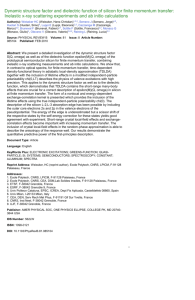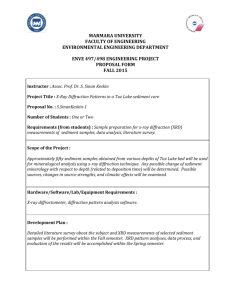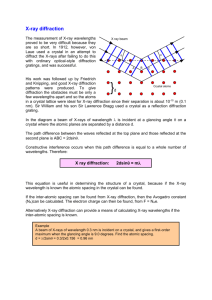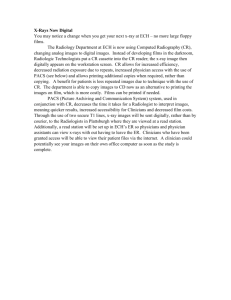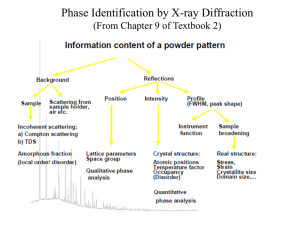Resonant X-ray diffraction for the characterization of oxide thin films
advertisement
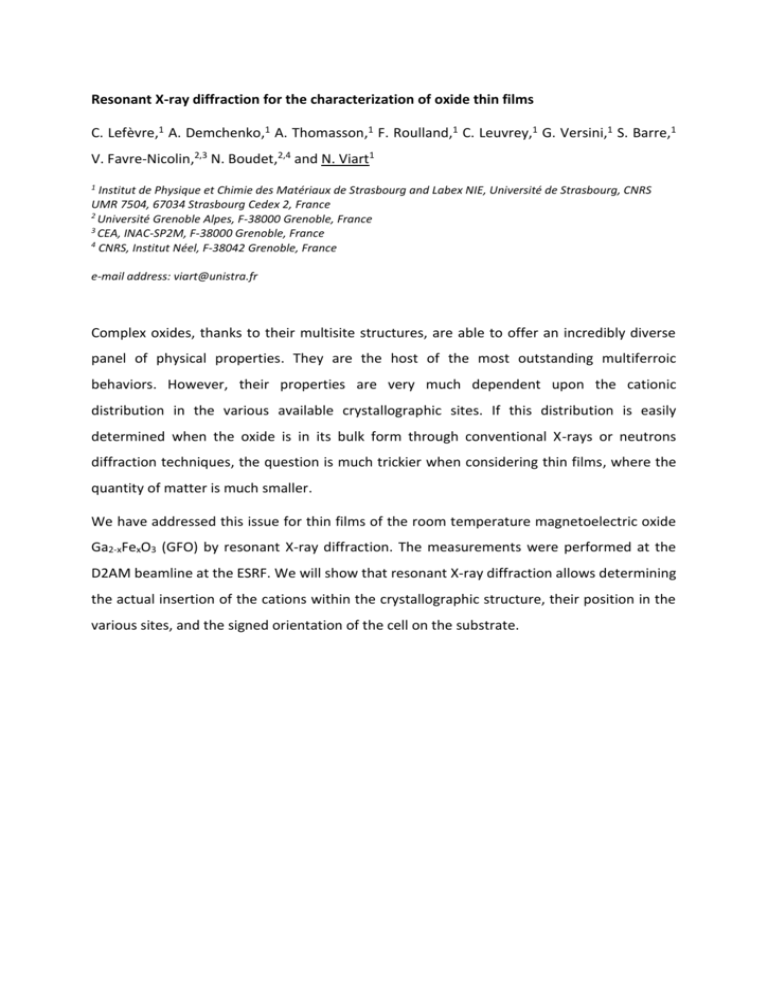
Resonant X-ray diffraction for the characterization of oxide thin films C. Lefèvre,1 A. Demchenko,1 A. Thomasson,1 F. Roulland,1 C. Leuvrey,1 G. Versini,1 S. Barre,1 V. Favre-Nicolin,2,3 N. Boudet,2,4 and N. Viart1 1 Institut de Physique et Chimie des Matériaux de Strasbourg and Labex NIE, Université de Strasbourg, CNRS UMR 7504, 67034 Strasbourg Cedex 2, France 2 Université Grenoble Alpes, F-38000 Grenoble, France 3 CEA, INAC-SP2M, F-38000 Grenoble, France 4 CNRS, Institut Néel, F-38042 Grenoble, France e-mail address: viart@unistra.fr Complex oxides, thanks to their multisite structures, are able to offer an incredibly diverse panel of physical properties. They are the host of the most outstanding multiferroic behaviors. However, their properties are very much dependent upon the cationic distribution in the various available crystallographic sites. If this distribution is easily determined when the oxide is in its bulk form through conventional X-rays or neutrons diffraction techniques, the question is much trickier when considering thin films, where the quantity of matter is much smaller. We have addressed this issue for thin films of the room temperature magnetoelectric oxide Ga2-xFexO3 (GFO) by resonant X-ray diffraction. The measurements were performed at the D2AM beamline at the ESRF. We will show that resonant X-ray diffraction allows determining the actual insertion of the cations within the crystallographic structure, their position in the various sites, and the signed orientation of the cell on the substrate.


